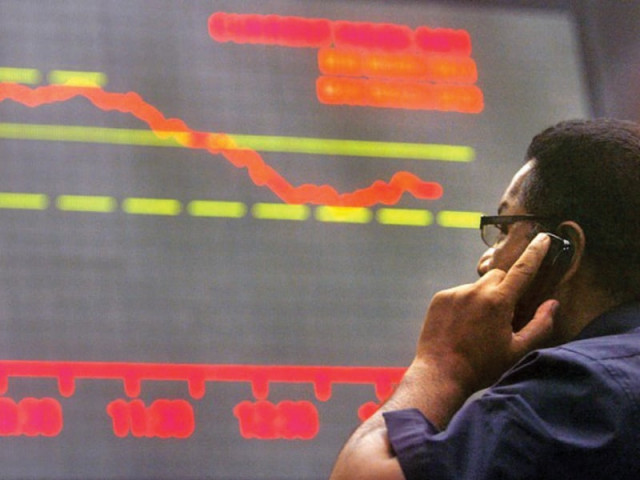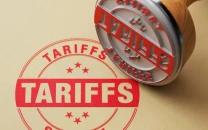View from McLeod Road: Post-elections, how much higher can valuations go?
Investors appear to have largely traded away much of Pakistan’s ‘political risk’ before the polls.

Companies in the benchmark KSE-100 index currently trade at an average of 8.5 times their last year’s earnings. Just six months ago, that number was 6.74 times previous year’s earnings. PHOTO: FILE
There has been a quiet unspoken wind blowing on Karachi’s McLeod Road: nobody dares say it, but the Pakistani equity market is betting that the country is about to become more politically stable. At least part of that sentiment has been helping drive the stock market upwards, including the rally on Friday, the day before the elections. But how much higher can valuations go?
In order to answer that question, let us first examine what it means to say that valuations are going up and what has happened so far.
The price of stock is measured not just in how much you have to pay to buy one share, but also in certain ratios, particularly things like the price-to-earnings (PE) ratio, which determines the multiple over the previous years’ that investors are willing to pay for a given stock.
PE ratios tend to be higher for companies that the market expects rapid growth in. A case in point is Engro Foods, which trades at nearly 42 times its 2012 profits, largely because the market expects its profits to continue skyrocketing for the foreseeable future.
Conversely, investors may be willing to pay a lower multiple for a stock that is perceived to be higher risk, either because it faces regulatory risks, or because it is in an industry that is vulnerable to external shocks, or even because it does not trade much and therefore is more volatile.

The one risk that overpowers all others for Pakistani companies is “political risk”, a catchall phrase that is supposed to sum up the risks of doing business in Pakistan: everything from strikes and protests causing factories to burn down (Phillip Morris, 2007) to the government not honouring contracts signed by a previous administration (Engro Corporation, 2012). (Political risk does not include the cost of bad infrastructure, by the way. The assumption is that your area having bad roads and no electricity is not exactly something that can surprise you.)
Investors expect at least part of the “political risk” premium currently built into the prices of Pakistani stocks to disappear, should the transfer of power between two civilian, democratically elected governments be completed in a reasonably orderly fashion. Should that happen, Pakistani stock prices will go up even further than they already have. But how likely is that?
According to data provided by Lakson Investments, companies in the benchmark KSE-100 index currently trade at an average of 8.5 times their last year’s earnings. Just six months ago, that number was 6.74 times previous year’s earnings. Granted, more earnings numbers have come out since then, but that is a staggering revaluation upwards of Pakistani equities. Is there any more room left? The answer is, yes, though maybe not nearly as much as people think.
During the Musharraf administration, considered the heyday of Pakistani capital markets and a time when Pakistan was perceived to be relatively low political risk, the average PE ratio of the KSE-100 index was seen hovering between 9 and 10 times earnings. It seems a good bet that the market will return to that level, which is slightly higher than that of today.
It is entirely possible, however, that the market might push just slightly higher than that level, as the hunt for liquidity by foreign investors pushes more and more brokers to unlock untraded blocks of hitherto illiquid stocks from the dusty books of large state-owned institutional investors like provincial and federal pension funds, etc.
Many stocks that are currently considered “second tier” may start trading at higher multiples, which will likely create opportunity for value investors looking for good bargain stocks with strong earnings growth and reliable managements. The overall market PE ratio may not increase by a whole lot more, but that does not mean there still is not a whole lot of money to be made in this market.
Published in The Express Tribune, May 12th, 2013.
Like Business on Facebook to stay informed and join in the conversation.


















COMMENTS
Comments are moderated and generally will be posted if they are on-topic and not abusive.
For more information, please see our Comments FAQ